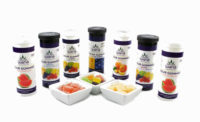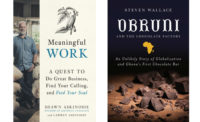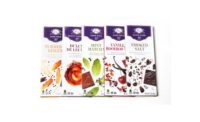Unlike the doomsday date (Dec. 21, 2012) posed by the cyclic end of the Mayan calendar that some interpreted as the end of the world, the year 2020 has much more credibility as a valid deadline. In fact, it could very well represent the end of cocoa and chocolate as most consumers know it.
With the recent announcement by the Hershey Co. that all of its chocolate will come from a certified cocoa sourcing, thus joining the other “big boys” such as Mars, Nestlé, Mondelez and Ferrero, 2020 looms as a mega challenge for cacao farmers, cooperatives, cocoa and chocolate suppliers.
As Kip Walk, director of cocoa for Blommer Chocolate Co. points out, “Up to now most of the focus for sustainable products has been in Europe, Australia and Canada. Hershey’s announcement brings sustainability into focus for the United States.”
He also emphasizes that the announcement will have “a ripple effect with other U.S. companies now looking to provide sustainable products to their consumers. With all of the major brands now looking to have a 100% sustainable supply by 2020, the supply chain managers and cocoa processors will have a real challenge in helping those brands achieve that goal.
“A collaborative effort will be needed between all of the industry stakeholders and local governments to find ways to aggregate individual farmers into more viable cooperatives or farmer associations,” Walk continues. “With this aggregation, training on best farming practices will have greater impact and allow for the certification bodies to rapidly expand the supply of certified cocoa.”
Len Booth, pricing and procurement manager for Puratos Chocolate USA, concurs.
“It puts a serious strain on suppliers of certified cocoa,” he says. “With just over 10% of the world cocoa being certified, and most of the major chocolate players in the world announcing a very aggressive plan over the next eight years, a lot of work will need to be done at origin to ensure that these commitments can be realized. We’ve seen an aggressive push at origin to get more farmers and co-ops certified sustainable, either through third-party certifications or supplier-driven programs, but not enough to address the full needs of the industry.”
Those efforts go back several years, as Michiel Hendriksz, ADM Cocoa’s director of sustainability, points out. Its Socially and Environmentally Responsible Agricultural Practices (SERAP) program, which was born from the company’s work with cocoa farming cooperatives beginning in 2005 in the Ivory Coast, has spread to other origin countries in Africa and Asia.
“SERAP was designed from the beginning to be adaptable to the major certification programs including RainForest Alliance, UTZ and Fair Trade,” he explains. “Cocoa from SERAP-qualifying farms now earns certifications under one or more of these certification systems. Our SERAP program also serves as a platform for some companies to tell their own sustainability stories without association with major certifiers.”
Even with such successes, everyone agrees that the challenge ahead is formidable.
“Going forward, it is important for our industry to catalyze the organization of the majority of cocoa farmers that are still not members of professional cocoa farming organizations,” says Steve Laning, director of innovation for ADM Cocoa.
“It is impossible for the industry to work one-on-one with the millions of small holder cocoa farmers,” he says.” It is practical, however, for us to work effectively with well-managed cooperatives. ADM Cocoa is already working in this way in regions in sub-Saharan Africa and Southeast Asia. While Hershey and others are challenging us and other suppliers to deliver sustainable cocoa, we believe their objectives are achievable and laudable.”
That said, it suggests that consumer expectations for chocolate will rise. Thus, in addition to touting their connections to sustainable sourcing, manufacturers will need to convince consumers that the higher costs are worth the chocolate.
Two of the most likely means manufacturers can do so are by emphasizing improved quality and/or ethical value. There are already signs of that occurring.
As Rose Potts, Blommer’s corporate manager, sensory and product guidance, notes, the recession made consumers much more value-conscious. Even as overall demand for chocolate may have decreased, it appears that some chocolate lovers have become more selective with the chocolates they buy.
“Chocoholics may have been making less purchases, but they definitely ‘trading up’ to make the occasions memorable,” she says. “Consumers are looking for the most bang for the buck and with the sophistication of today’s chocolate lover, that may mean making sure each eating occasion is the most spectacular that they can afford.”
It’s a phenomenon that will continue to grow, Booth believes.
“I think that we’ll see the consumers raise the bar more and more,” he says. “As the market continues to evolve and expand into the developing markets, supply becomes an issue, the reason for the push for more sustainable cocoa. As the supply becomes tighter and tighter, and prices reflect this tightness, consumers are going to expect more if they’re paying more.”
But the notion of improved quality has different connotations for different consumers.
As Joe Sofia, chocolate specialist and account manager for Cargill Cocoa & Chocolate, says, “Some consumers believe quality means sustainably sourced ingredients, but many customers still buy the same quality of chocolate they have enjoyed the past 50 years. Others perceive quality by the ingredients on the label, and they are looking for more natural and simple ingredients with no additives or preservatives. Overall, personal taste is still the number one factor that determines food choices; consumers simply want to indulge in great-tasting chocolate confections and treat themselves to something special.”
That doesn’t mean indulging can’t be healthy. To some, guilt-free is synonymous with sugar-free. Although most would agree that the sugar-free chocolate segment hasn’t posted significant gains recently, despite an increased concern about diabetes, sugar intake and health in general, some data suggests that the “no added sugar” segment is beginning to attract attention.
“Consumers are becoming increasingly aware of the risks associated with a high consumption of sugar in their diets and how it can negatively affect their health,” says Courtney LeDrew, Cargill’s Cocoa & Chocolate marketing manager. “This leads them to look for snacks that balance good-for-you components, indulgence and taste.
“However, it’s true that the sugar-free and sugar-reduced marketplace has stagnated,” she adds. “Instead, no sugar added claims have taken reign, while sugar-free and reduced-sugar claims remain stable. According to Innova Market Insights, the number of chocolate products tracked with a no added sugar claim increased 130% from the first half of 2011 to the first half of 2012.”
Part of this phenomenon stems from increased use of alternative natural sweeteners, particularly stevia.
“Natural sweeteners are the driver behind this trend,” LeDrew affirms. “When stevia entered the U.S. market it was the first of its kind – extremely sweet, zero calories, derived from a plant – and became very popular. Now other natural sweeteners, such as monk fruit, are entering the market.”
And despite major improvements in the quality of sugar-free, reduced sugar and no sugar added chocolate products, coupled with ongoing interest in healthier chocolate products, the market hasn’t experienced a surge just yet.
Nonetheless, LeDrew believes that the no added sugar claim pairs well with the clean label trend.
“Both trends will remain relevant in the marketplace as long as the overall focus on health and wellness continues to intensify,” she says.








